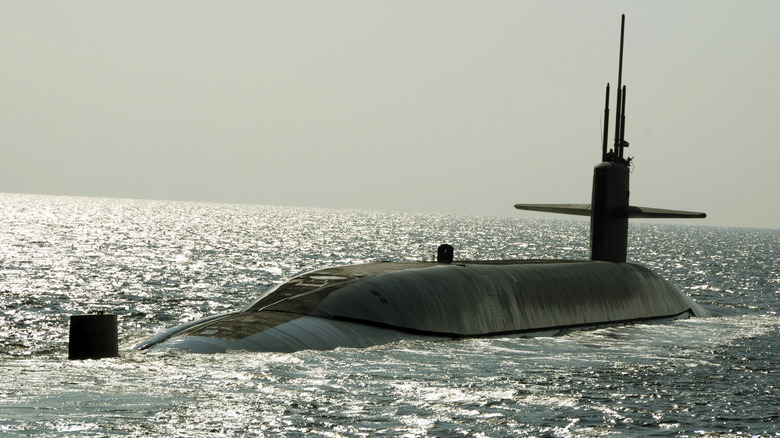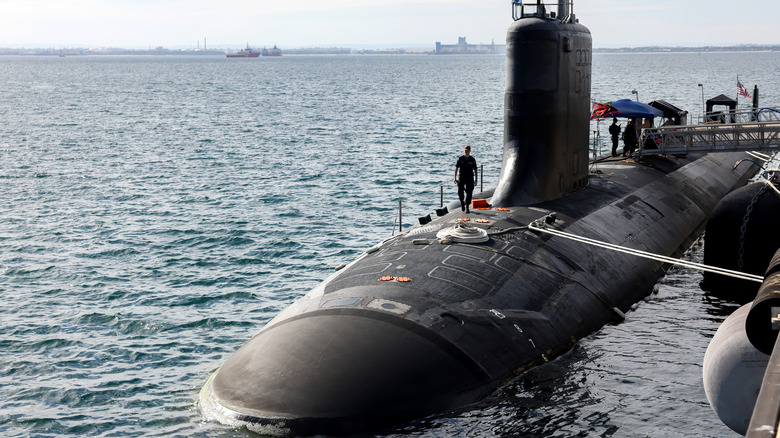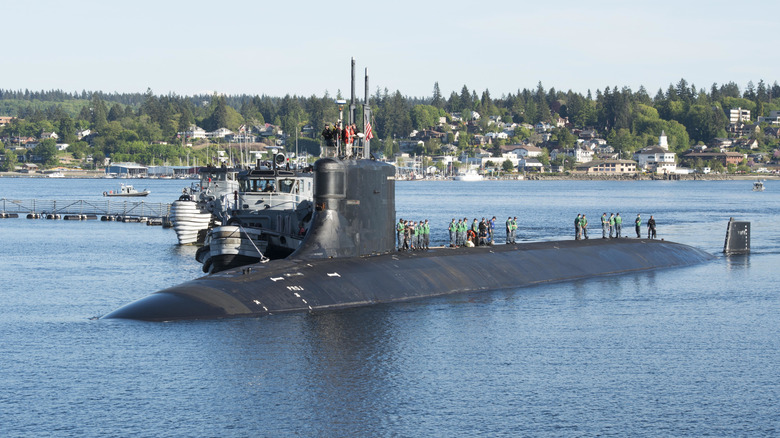Which Country Has The Most Nuclear Submarines In Its Military?
Nuclear submarines are a key deterrent. Consequently, it is no surprise that major global powers continue to invest heavily in the expansion and modernization of their submarine fleets. According to Statistica, China boasted a total of 12 nuclear submarines at the start of 2024, split evenly into six attack submarines and six ballistic missile submarines.
Russia, a long-standing power in submarine technology, maintains an even larger undersea presence. The Russian Navy's submarine force is reported to have approximately 30 nuclear submarines with attack and ballistic missile capabilities, solidifying its position as a significant global naval player.
However, no nation comes close to the United States. With a naval fleet that includes as many as 71 nuclear submarines, the U.S. Navy possesses the largest and arguably most capable nuclear submarine force in the world. The American submarine fleet includes 53 fast attack submarines, 14 ballistic missile submarines and 4 guided missile submarines. Together, this formidable force is a key component of the nation's global power projection and strategic deterrence capabilities.
Evolution of American nuclear submarines
Nuclear submarines are not a recent addition to the American naval arsenal. Their development can be traced back several decades to the post-World War II era. In 1954, the USS Nautilus (SSN-571) entered service with the U.S. Navy as the world's first nuclear-powered submarine.
Stretching about 98 meters (323 feet) with a surface displacement of 3,533 tons, the revolutionary USS Nautilus was significantly larger than its diesel-powered predecessors. More than size advantages, it was also capable of prolonged submersion and sustained high speeds due to its uranium-powered nuclear reactor, eliminating the need for frequent surfacing to recharge batteries or refuel.
Since its inception, American nuclear submarines have steadily evolved, leveraging cutting-edge technology to enhance their efficiency, stealth and safety. Today, nuclear submarines are pretty much only limited by the amount of supplies they can carry for their crew, able to travel across the globe without surfacing.
The USS Iowa, commissioned in April 2025, is the latest American nuclear submarine and represents just how far submarine technology, weaponry, and design have evolved from the USS Nautilus. The USS Iowa is a highly advanced submarine with features such as a reconfigurable torpedo room, the capability to deploy unmanned undersea vehicles, Tomahawk cruise missile compatibility, and futuristic photonics masts in place of traditional periscopes.
The organization of America's nuclear submarines
The U.S. Navy nuclear submarines are currently categorized into four primary operational classes: Ohio, Los Angeles, Seawolf, and Virginia, based on distinct mission profiles and specific capabilities.
The Ohio-class submarines, commonly referred to as "boomers," are the titans of the fleet. They include some of the largest submarines ever made and are primarily deployed as ballistic missile submarines (SSBNs). Four Ohio-class submarines have also been converted into guided-missile platforms (SSGNs), each capable of carrying up to 154 Tomahawk cruise missiles, allowing them to strike long-range targets in support of combat operations.
The Los Angeles-class submarines form the backbone of America's fast-attack submarine force (SSN). They are designed and equipped for intelligence gathering alongside anti-submarine and anti-surface warfare. Some of them also boast Vertical Launch Systems for firing Tomahawk missiles, greatly enhancing their strike capabilities.
There are only three submarines in the Seawolf class. The initial plan was to build a total of 29 Seawolf-class submarines over a ten-year period. However, the end of the Cold War and budget constraints triggered a premature end to the program. Seawolf-class submarines are known for their stealth. They are also larger and faster than the Los Angeles-class subs.
The latest generation of America's attack submarines is the Virginia-class. An example is the recently commissioned USS Iowa, which can effectively be deployed as a multi-mission naval warfare platform.


